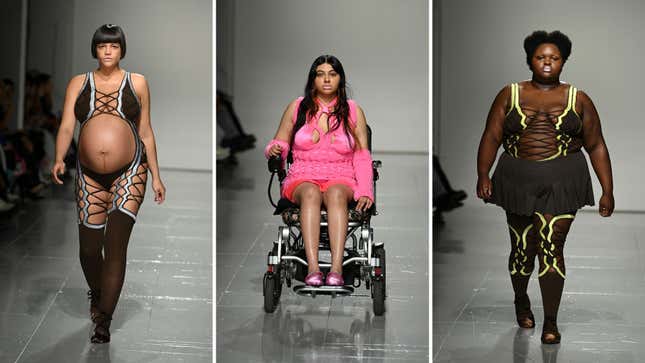Designer Sinead O’Dwyer Is Putting Pregnant Women on the Runway
The Irish designer’s sophomore show at London Fashion Week embodied the theme of desire for models of all shapes, sizes, and abilities.
BeautyStyle

In July, Irish designer Sinead O’Dwyer made her London Fashion Week debut to both critical and cultural acclaim. In an industry that likes to pat itself on the back for mere attempts at diversity—racial, body, or otherwise—O’Dwyer is one of the few up-and-coming designers whose entire ethos, not just a collection or two, revolves around making fashion appealing for everyone.
This week, when O’Dwyer presented her sophomoric effort at London Fashion Week with her fall 2023 ready-to-wear collection, she made headlines for her inclusivity once again. On top of custom-fitting her designs to each model across a large sizing spectrum, she also intentionally designed looks to emphasize parts of our bodies that often get ignored or minimized in high fashion spaces: large breasts and midsections, for starters. And this time, she expanded the spectrum of diversity even further, including a model in a wheelchair and a pregnant model.
-

-

-

-

-

-

-

-

-

-

-

-

-

-

-

-

-

-

-

-

-

-

-

-

-

-

-

-

-

-

-

-

-

-

-

-

-

-

-

-








































